Buffalo breeds
Indigenous buffalo breeds
1. Murrah
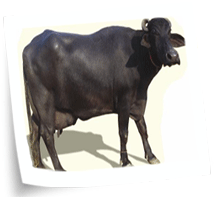
- It is the most important breed of buffaloes whose home is Rohtak, Hisar and Jind of Haryana, Nabha and Patiala districts of Punjab and southern parts of Delhi state.
- This is otherwise called as Delhi, Kundi and Kali.
- The colour is usually jet black with white markings on tail and face and extremities sometimes found.
- The tightly curved horn is an important character of this breed.
- The buffalo cows of this breed are one of the most efficient milk and butter fat producers in India.
- Butter fat content is 7%. Average lactation yield is varying from 1500-2500 kgs and the average milk yield is 6.8 kgs /day.
- It is also used for the grading up of inferior local buffaloes.
2. Surti
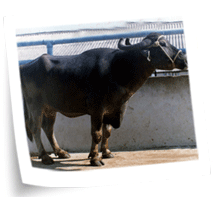
- The breeding tract of this breed is Kaira and Baroda district of Gujarat.
- Coat colour varies from rusty brown to silver-grey. Skin is black or brown.
- The horns are sickle shaped, moderately long and flat.
- The peculiarity of the breed is two white collars, one round the jaw and the other at the brisket.
- The milk yield ranges from 900 to 1300 kgs.
- The peculiarity of this breed is very high fat percentage in milk (8-12per cent).
3. Jaffrabadi
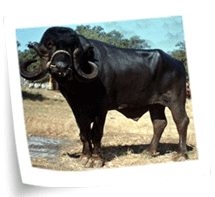
- The breeding tract of this breed is Gir forests, Kutch and Jamnagar districts of Gujarat.
- The horns are heavy, inclined to droop at each side of the neck and then turning up at point (drooping horns).
- The average milk yield is 100 to 1200 kgs.
- The bullocks are heavy and used for ploughing and carting.
- These animals are mostly maintained by traditional breeders called Maldharis, who are nomads.
4. Bhadawari
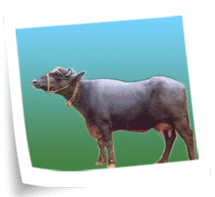
- Home tract of this breed is Agra and Etawah district of Uttar Pradesh and Gwalior district of Madhya Pradesh.
- The body is usually light or copper coloured is a peculiarity of this breed. Eye lids are generally copper or light brown colour.
- Two white lines ‘Chevron’ are present at the lower side of the neck similar to that of Surti buffaloes.
- The average milk yield is 800 to 1000 kgs.
- The bullocks are good draught animal with high heat tolerance.
- The fat content varies from 6 to 12.5 per cent. This breed is an efficient converter of coarse feed into butterfat and is known for its high butter fat content.
5. Nili Ravi
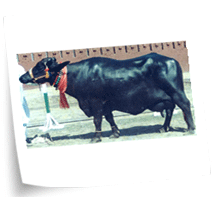
- This breed is found in Sutlej valley in Ferozpur district of Punjab and in the Sahiwal district of Pakistan. (Bred around Ravi river).
- The peculiarity of the breed is the wall eyes.
- The milk yield is 1500-1850 kgs per lactation.
- The intercalving period is 500-550 days and age at first calving is 45-50 months.
6. Mehsana
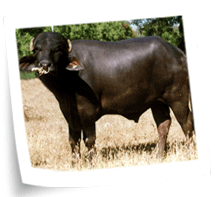
- Mehsana is a dairy breed of buffalo found in Mehsana town in Gujarat and adjoining Maharashtra state.
- The breed is supposed to have been evolved out of crossbreeding between the Surti and the Murrah.
- The milk yield is 1200-1500 kgs. The breed is supposed to have good persistency.
- The intercalving period ranges between 450-550 days.
7. Nagpuri
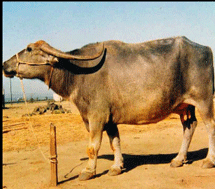
- The breeding tract of this breed is Nagpur, Akola and Amrawati districts of Maharashtra.
- These are black coloured animal with white patches on face, legs and tail. This is also called as Elitchpuri or Barari.
- The horns are long, flat and curved, bending backward on each side of the back. (Sward shaped horns).
- The age at first calving is 45-50 months with an intercalving period of 450-550 days.
8. Toda

- Toda breed of buffaloes is named after an ancient tribe, Toda of Nilgiris of south India.
- The predominate coat colours are fawn and ash-grey.
- These buffaloes are quite distinct from other breeds and are indigenous to Nilgiris hills.
- Thick hair coat is found all over the body.
- They are gregarious in nature.
Comments
Post a Comment